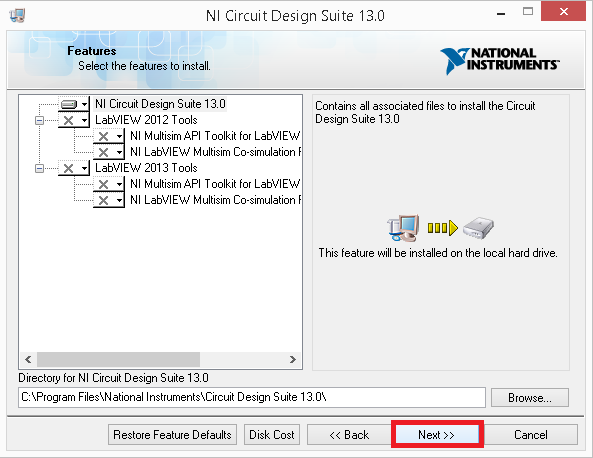

The latter is connected to the "Control" pin.
MULTISIM 14.1 MANUAL DE USO EN ESPAÑOL PDF FULL
Thus the full part numbers were NE555V, NE555T, SE555V, and SE555T. These were available in both high-reliability metal can (T package) and inexpensive epoxy plastic (V package) packages. The NE555 parts were commercial temperature range, 0 ☌ to +70 ☌, and the SE555 part number designated the military temperature range, −55 ☌ to +125 ☌. Variants available include the 556 (a DIP-14 combining two complete 555s on one chip), and 558 / 559 (both a DIP-16 combining four reduced-functionality timers on one chip). It was Art Fury who thought the circuit was gonna sell big who picked the name '555'." Design ĭepending on the manufacturer, the standard 555 package includes 25 transistors, 2 diodes and 15 resistors on a silicon chip installed in an 8-pin dual in-line package (DIP-8).
.png)
However, in a recorded interview with an online transistor museum curator, Hans Camenzind said "It was just arbitrarily chosen. Several books report the name 555 comes from the three 5 kilohm resistors inside the chip. The 555 timer was manufactured by 12 companies in 1972 and it became a best selling product. The 9-pin copy had been already released by another company founded by an engineer who attended the first review and retired from Signetics that firm withdrew its version soon after the 555 was released. This revised design passed a second design review with the prototypes completed in October 1971 as the NE555V (plastic DIP) and SE555T (metal TO-5). The change decreased the required 9 pins to 8 so the IC could be fit in an 8-pin package instead of a 14-pin package. A few days later, Camenzind got the idea of using a direct resistance instead of a constant current source finding later that it worked. Assessed to be without error, it proceeded to layout design. The first design for the 555 was reviewed in the summer of 1971.

Camenzind's idea was originally rejected, since other engineers argued the product could be built from existing parts sold by the company however, the marketing manager approved the idea. Camenzind proposed the development of a universal circuit based on the oscillator for PLLs and asked that he develop it alone, borrowing equipment from Signetics instead of having his pay cut in half.

Signetics subsequently laid off half of its employees due to the 1970 recession, and development on the PLL was thus frozen. He designed an oscillator for PLLs such that the frequency did not depend on the power supply voltage or temperature. In 1968, he was hired by Signetics to develop a phase-locked loop (PLL) IC. The timer IC was designed in 1971 by Hans Camenzind under contract to Signetics.


 0 kommentar(er)
0 kommentar(er)
